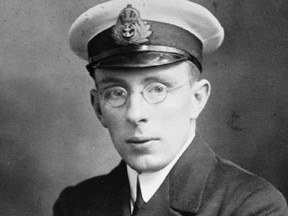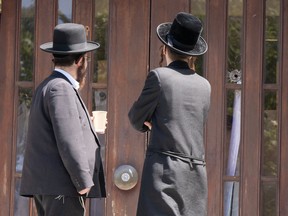In the decades when the Brits were in charge of handing out our Victoria Crosses, 99 Canadians or men serving with Canadian forces received the decoration
Article content
These days, the Canadian Victoria Cross is mostly known as the most prestigious decoration never awarded. It’s been 31 years since Canada first inaugurated its own version of the Victoria Cross, the highest possible decoration for valour “in the presence of the enemy.” Despite some extremely brave contenders during the War in Afghanistan, a hesitant military brass has yet to break the seal on the new award.
Advertisement 2
Article content
But in the decades when the Brits were in charge of handing out our Victoria Crosses, 99 Canadians or men serving with Canadian forces received the decoration for actions ranging from singlehandedly taking out whole platoons of the enemy, to singlehandedly rescuing entire platoons of comrades — with either feat often being accomplished while wounded.
Below, a not-at-all comprehensive summary of some of the more notable Canadian VC winners.
A meek, diminutive, nearly-blind fruit grower saves 38 men
British Columbia’s Rowland Bourke is one of the very few British Empire sailors to be awarded the Victoria Cross; naval warfare doesn’t really lend itself to situations of conspicuous individual initiative. But Burke is also one of the most unlikely men to have ever received the decoration. He was small, nebbish and effectively blind without his thick glasses; when the First World War broke out, poor eyesight got him rejected from every branch of the armed forces except for the Royal Naval Volunteer Reserve, where he was assigned to a motor launch.
For most of the war, commanders kept the disabled Burke assigned to uneventful shore patrols. But during an April 1918 raid on the occupied Belgian port of Zeebrugge, Bourke pulled off the superhuman feat of rescuing 38 men from a stricken vessel in the midst of heavy fog, under constant machine gun fire and with shells exploding in all directions. One of those shells ‚ and about 50 bullets — would strike Bourke’s small vessel before it was all over.
Advertisement 3
Article content
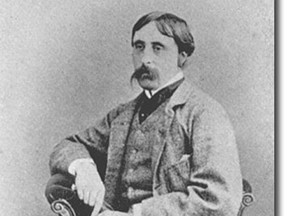
One of the survivors of the Charge of the Light Brigade
Canadians have won Victoria Crosses for killing Germans, Austrians, Japanese, Italians, Boers, Indians, and Sudanese, among a few others. But the very first one was given out for killing Russians.
Lt. Alexander Roberts Dunn wasn’t only the first Canadian to receive the Victoria Cross, but he was in the first ever-batch of British Empire soldiers to be pinned with the decoration by its namesake, Queen Victoria. And he got it by participating in the Charge of the Light Brigade, a disastrous Crimean War action in which British cavalry charged Russian guns across open ground. The 6’3” Dunn survived the charge, and in the ensuring sword melee with Russian forces was such a tornado of steel that he was credited with saving the lives of two compatriots.
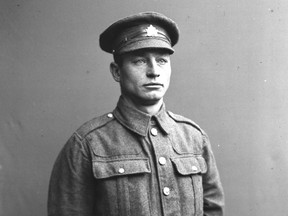
The Ontario farmer who lived the plot of the film 1917
The film 1917, released in 2019, is a First World War drama that follows two British soldiers as they rush through hostile territory to deliver a message likely to save the lives of 1,600 men. A version of this scenario played out multiple times throughout the war, but perhaps never as dramatically as with Ontario’s Pte. Harry Brown.
Article content
Advertisement 4
Article content
In October 1917, with his unit overwhelmed by a German counterattack, Brown was one of two messengers dispatched to the rear for help. The first was killed, leaving Brown alone to sprint through a storm of artillery fire with a shattered arm. When the bleeding soldier made it to a rear area clutching the dispatch, he collapsed, mumbled “important message” and then lost consciousness, dying a few hours later.
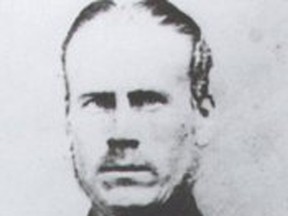
The only Victoria Cross awarded for actions in Canada
Canadians have won the Victoria Cross on three continents. But only one of the decorations has ever been awarded for something that happened in Canada — and it wasn’t won by a Canadian.
Timothy O’Hea was an Irishman serving with the British Army in colonial Canada. He had been sent across the Atlantic to fight fellow Irishmen; U.S.-based Irish nationalists who kept mounting slapdash invasions of British North America.
But O’Hea didn’t win the decoration in battle. Rather, in 1866 he singlehandedly saved a substantial portion of Danville, Que. from exploding. After a fire broke out on a munitions train moving through the city, O’Hea stormed into the blaze and singlehandedly put it out.
Advertisement 5
Article content
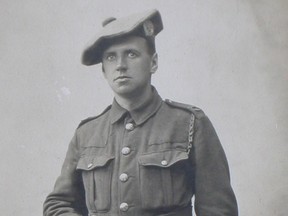
The Winnipegger who “cheerfully” took a hail of bullets near what is now Israel
Before Israel’s 1948 creation, it was part of the British Mandate for Palestine. And Canadians were among the forces that helped the British to capture the territory from the Ottoman Empire during the First World War.
Winnipeg-born Robert Cruickshank was near the Jordan River when his unit became trapped in a desert depression by heavy Ottoman rifle fire. Three times, Cruickshank ran out of the depression in a bid to alert reinforcements, and three times he was immediately sent reeling by a bullet. The third bullet rendered him too injured to walk — and he would even take a fourth bullet while collapsed on the ground. But until the trapped unit was eventually freed by the British advance, colleagues reported that the badly wounded Winnipegger remained “cheerful and uncomplaining.”
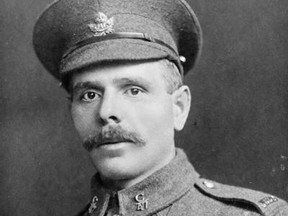
The Ukrainian war hero who became a homeless accused murderer
Filip Konowal is the first Ukrainian-born recipient of the Victoria Cross, but he’s also a chilling representation of what the war did to Canada’s young men. Photographs of Konowal — as well as an officially commissioned painting — all show a haunted stare.
Advertisement 6
Article content
Konowal won the VC for an August 1917 killing spree near the site of Vimy Ridge in which he repeatedly charged heedlessly at German positions, stabbing any soldier he found with a bayonet.
Konowal would get half his face shot off only a few days later, and soon after the war, he would be charged with murder after stabbing a man to death in Hull, Que. “That makes the 53rd,” was how he reportedly described the killing to police. After a seven-year institutionalization for insanity, Konowal would spend time as a homeless veteran on the streets of Ottawa, during which time his Ukraine-based wife died in the Holodomor. Although, his story would have a happy ending of sorts: Konowal would pull his life together after securing a job as a Parliament Hill janitor.
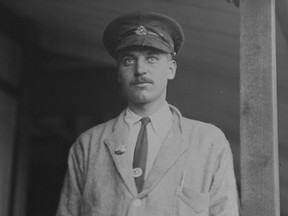
The teenager who vaulted into a German machine gun nest
Seventy-three Canadian soldiers won a Victoria Cross during the First World War, and the most common way was to charge a German machine gun and kill the crew.
That’s what 19-year-old Pte. Cecil Kinross did in 1916 during the Battle of Passchendaele, with one witness describing his actions as that of a “wild Canadian, running amok trying to defeat the entire German army single-handed.”
Advertisement 7
Article content
It made Kinross one of the youngest-ever recipients of the Victoria Cross, but he returned to Alberta badly damaged by the war; he struggled from sleep problems, never married and was a severe alcoholic until his death at age 62 in a Lougheed, Alta. hotel room.
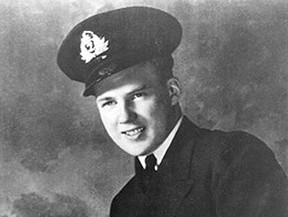
The fighter pilot given a monument by the nation he fought
Lt. Robert Hampton Gray, from Nelson, B.C., is not only the last Canadian winner of the Victoria Cross, but he was also the last Canadian to die in action during the Second World War.
On Aug. 9, 1945, an atomic bomb had already been dropped on Hiroshima, and a second atomic bomb would be dropped on Nagasaki later in the day. Gray was piloting a Corsair fighter plane when he attacked an anchorage of Japanese warships off the fishing village of Onagawa. Hurtling into heavy anti-aircraft fire, Gray scored a direct hit on the destroyer escort Amakusa, sending it to the bottom with 71 sailors aboard. But Gray’s Corsair was fatally damaged in the assault, and only a few seconds later he would similarly plummet into Onagawa Bay.
In 1989, locals erected a cairn to Gray overlooking the site of his final resting place. It’s reportedly the only military memorial in Japan dedicated to a foreigner. And when the cairn was destroyed in the 2011 Tōhoku tsunami, locals built it again.
Advertisement 8
Article content
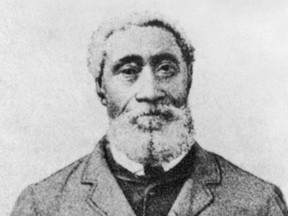
The son of escaped American slaves who helped put down an Indian rebellion
William Hall is the one-man embodiment of the wildly diverse peoples and loyalties that comprised the British Empire at its height. Born in Nova Scotia, he was the son of American slaves who escaped to British North America during the War of 1812.
Joining the British Navy in 1852, Hall spent 24 years travelling the world on British warships, seeing action in both Crimea and India, before returning to Nova Scotia for a quiet retirement. The action that would make him the first Black recipient of the Victoria Cross came in 1857. Hall helped put down an Indian rebellion by raining cannon fire on a Lucknow mosque that had been turned into a rebel redoubt — continuing to singlehandedly load and fire even as almost everyone around him was hit by sniper fire.
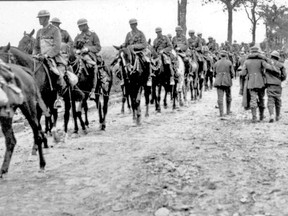
The day seven Canadians won Victoria Crosses
The Canadian experience of the First World War is often distilled into the 1917 Battle of Vimy Ridge, when Canadian units all fought together as one for the first time. But the far more consequential Canadian contribution to the war came in its final weeks. Canadian troops were instrumental in mounting the Hundred Day Offensive, the war-ending battle in which the Allies finally chased the Germans from their trenches and began pursuing them across open ground. It’s been estimated that at some points in the battle, one-quarter of the German Army was retreating from Canadian units.
Advertisement 9
Article content
And it was one of those hundred days, Sept. 2, 1918, that seven soldiers serving with the Canadian Corps near Cambrai, France would win the Victoria Cross. One of them, Cyrus Peck, was a sitting member of the House of Commons. Two of them were Americans who had enlisted with the Canadian Corps in order to get a jump start on their own country’s late entry into the war. And all of them got the decoration either for carrying wounded men to safety under heavy fire or for singlehandedly taking out hardened enemy positions. One, Sgt. Arthur George Knight, was credited with forcing the surrender of 20 Germans. Another, Pte. Walter Leigh Rayfield, brought in 30.
Our website is the place for the latest breaking news, exclusive scoops, longreads and provocative commentary. Please bookmark nationalpost.com and sign up for our daily newsletter, Posted, here.
Article content

